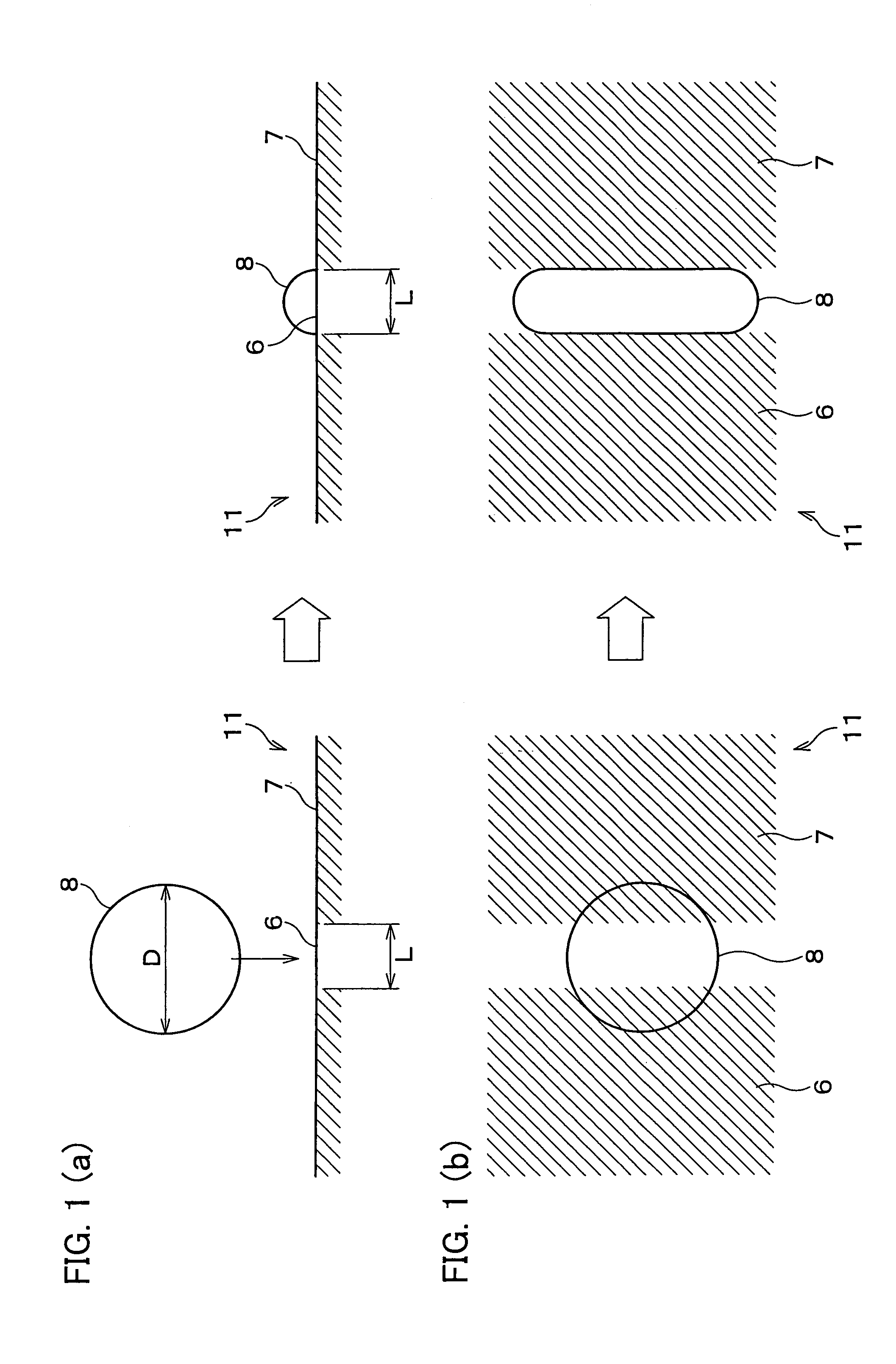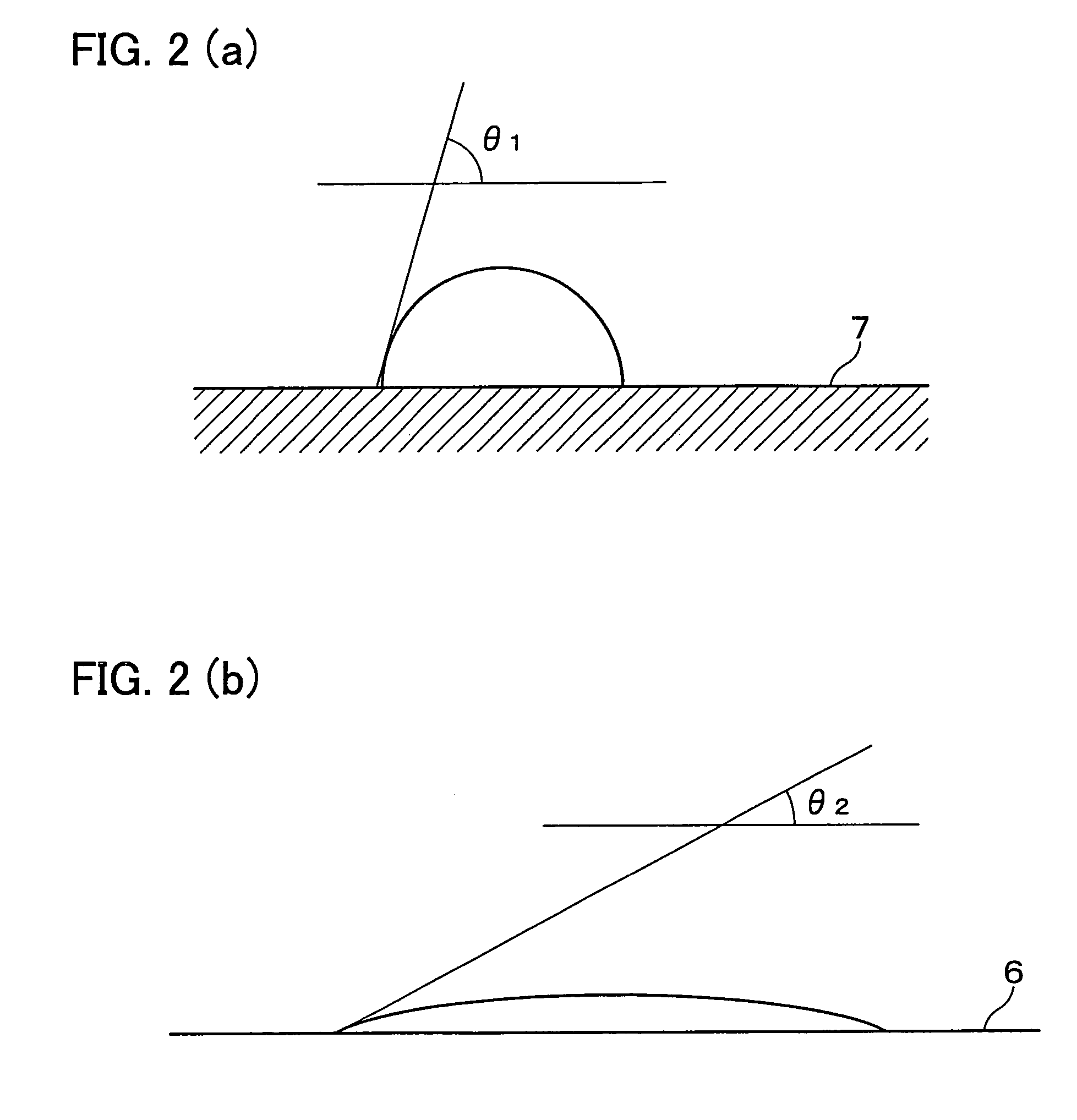Basic material for patterning and patterning method
a technology of basic materials and patterning, applied in the manufacture of electrode systems, electric discharge tubes/lamps, instruments, etc., can solve the problems of reducing the uniformity of the line width, and reducing the operating life of the inkjet head. , to achieve the effect of small level difference, low resistance, and less non-uniform line width
- Summary
- Abstract
- Description
- Claims
- Application Information
AI Technical Summary
Benefits of technology
Problems solved by technology
Method used
Image
Examples
first embodiment
[0053](First Embodiment)
[0054]One embodiment of the present invention is explained below. Note that, what is explained in the present embodiment is a pattern forming method of a gate wiring of a TFT (Thin Film Transistor) in a manufacturing process of a liquid crystal panel.
[0055]First of all, a pattern forming apparatus for realizing a pattern forming method of the present invention is explained below.
[0056]As illustrated in FIG. 5, the pattern forming apparatus according to the present invention includes a stage 12 on which a substrate 11 is to be mounted. On the stage 12, an inkjet head 13, a Y-direction driving section 14, and an X-direction driving section. 15 are provided. The inkjet head 13 is droplet discharging means for jetting out, onto the substrate 11, fluid ink (droplets) including wiring materials. The Y-direction driving section 14 moves the inkjet head 13 in a y direction, and the X-direction driving section 15 moves the inkjet head 13 move in the x direction.
[0057]...
second embodiment
[0105](Second Embodiment)
[0106]Another embodiment of the present invention is explained below. Note that, a pattern forming apparatus as shown in the first embodiment is used in the present embodiment so that it will not be explained here.
[0107]Also in the present embodiment, a gate wiring pattern forming method of TFT liquid crystal display panel is explained.
[0108]FIG. 6(a) illustrates a gate wiring pattern used in the present embodiment. In this gate wiring pattern, a water attracting / water repelling pattern is formed by a water attracting line 21 and a water repelling area 22, and the line width of the water attracting line 21 is not constant and is partially narrow. Specifically, the water attracting line 21 has a water attracting line 21a through a water attracting line 21d whose widths are respectively different. Each of the widths of the water attracting line 21b and the water attracting line 21c, which are narrower than that of the other lines, is 20 μm, and each of the wid...
third embodiment
[0115](Third Embodiment)
[0116]Still another embodiment of the present invention is explained below. Note that, as in the case of the first embodiment, the present embodiment discusses an example in which wiring lines are formed by using a water attracting / water repelling pattern which is formed by water attracting lines 6 and water repelling areas 7. The water attracting lines 6 and the water repelling areas 7 are formed by modifying the surface of the substrate 11 by the surface modifying processing method illustrated in FIGS. 3(a) and 3(d).
[0117]A pattern forming method in accordance with the present embodiment is a method for moving the droplet 8 to within the water attracting lines 6 as illustrated in FIG. 7(b) when the droplet 8 did not land on the center of the water attracting lines 6 on the substrate 11 as illustrated in FIG. 7(a).
[0118]The inventors found out that, when the droplet 8 landed on the substrate 11, the entire droplet 8 could move from the water repelling area 7...
PUM
| Property | Measurement | Unit |
|---|---|---|
| diameter | aaaaa | aaaaa |
| diameter | aaaaa | aaaaa |
| diameter | aaaaa | aaaaa |
Abstract
Description
Claims
Application Information
 Login to View More
Login to View More - R&D
- Intellectual Property
- Life Sciences
- Materials
- Tech Scout
- Unparalleled Data Quality
- Higher Quality Content
- 60% Fewer Hallucinations
Browse by: Latest US Patents, China's latest patents, Technical Efficacy Thesaurus, Application Domain, Technology Topic, Popular Technical Reports.
© 2025 PatSnap. All rights reserved.Legal|Privacy policy|Modern Slavery Act Transparency Statement|Sitemap|About US| Contact US: help@patsnap.com



